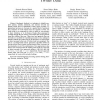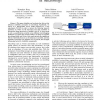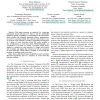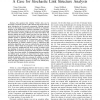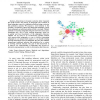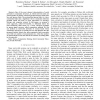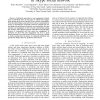146
Voted
ASUNAM
2015
IEEE
9 years 8 months ago
2015
IEEE
—To help users better understand the potential risks associated with publishing data publicly, as well as the quantity and sensitivity of information that can be obtained by comb...
148
Voted
ASUNAM
2015
IEEE
9 years 8 months ago
2015
IEEE
Abstract—Sentiment Analysis is a technique to identify people’s opinion, attitude, sentiment, and emotion towards any specific target such as individuals, events, topics, prod...
147
Voted
ASUNAM
2015
IEEE
9 years 8 months ago
2015
IEEE
—This paper identifies and evaluates key factors that influence credibility perception in microblogs. Specifically, we report on a demographic survey (N=81) followed by a user...
151
Voted
ASUNAM
2015
IEEE
9 years 8 months ago
2015
IEEE
150
Voted
ASUNAM
2015
IEEE
9 years 8 months ago
2015
IEEE
—The question that whether Twitter data can be leveraged to forecast outcome of the elections has always been of great anticipation in the research community. Existing research f...
139
Voted
ASUNAM
2015
IEEE
9 years 8 months ago
2015
IEEE
—Lurkers are silent members of a social network (SN) who gain benefit from others’ information without significantly giving back to the community. The study of lurking behavi...
156
Voted
ASUNAM
2015
IEEE
9 years 8 months ago
2015
IEEE
—Interactions in dynamic networks often transcend the dyadic barrier and emerge as subgraphs. The evolution of these subgraphs cannot be completely predicted using a pairwise lin...
154
Voted
ASUNAM
2015
IEEE
9 years 8 months ago
2015
IEEE
—User social networks are a useful information for many information access related tasks, such as recommendation or information retrieval. In such tasks, recent papers have explo...
136
Voted
ASUNAM
2015
IEEE
9 years 8 months ago
2015
IEEE
—One of the most relevant characteristics of social networks is community structure, in which network nodes are joined together in densely connected groups between which there ar...
148
Voted
ASUNAM
2015
IEEE
9 years 8 months ago
2015
IEEE
—Traditional approaches to user engagement analysis focus on individual users. In this paper we address user engagement analysis at the level of groups of users (social communiti...

